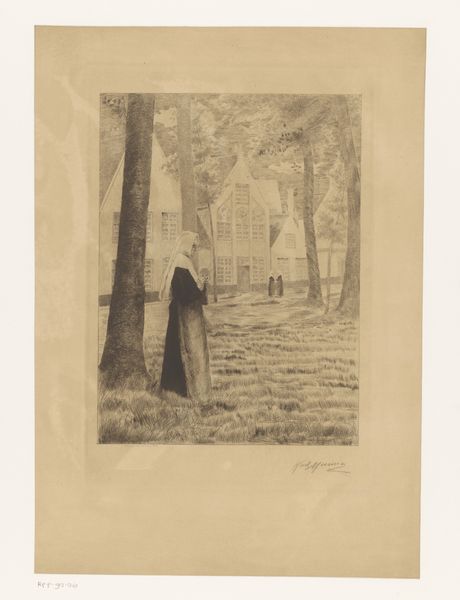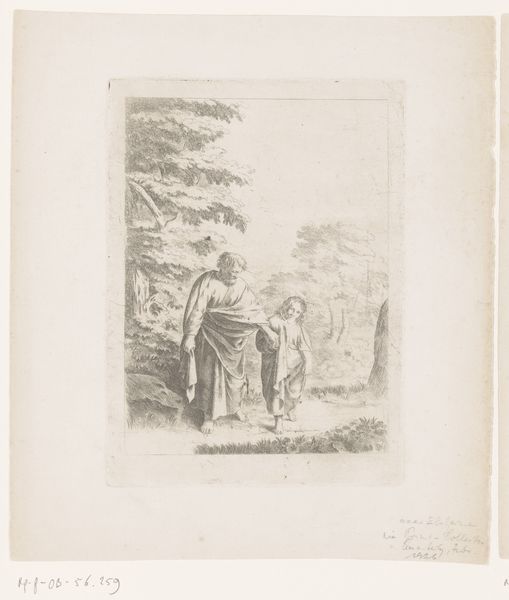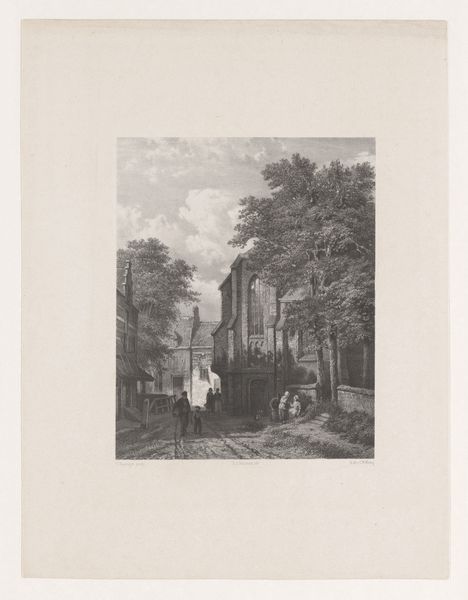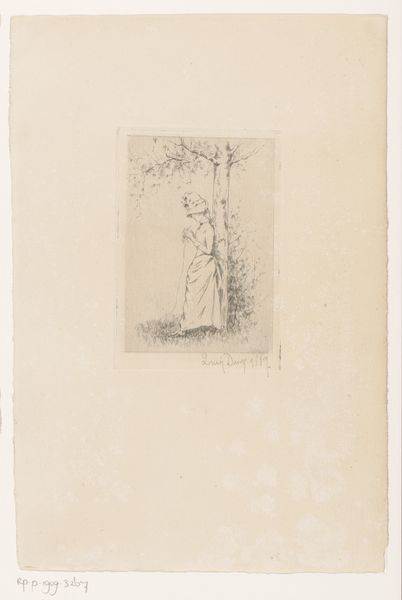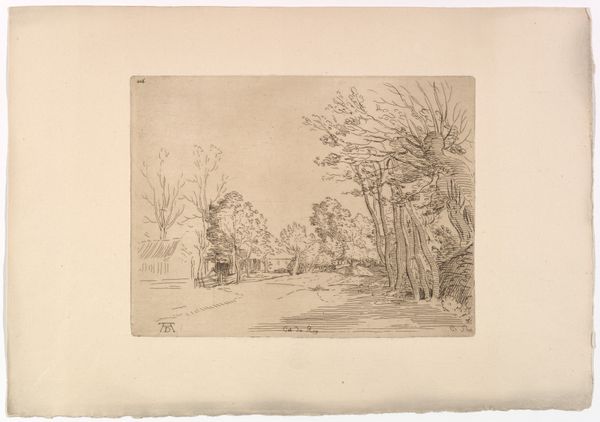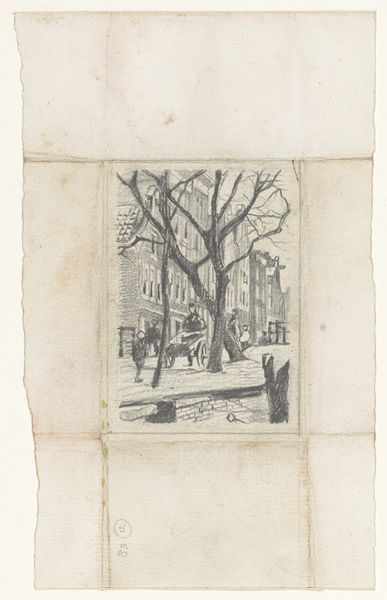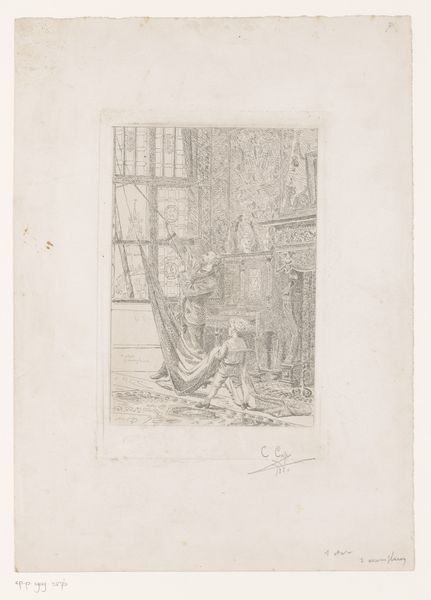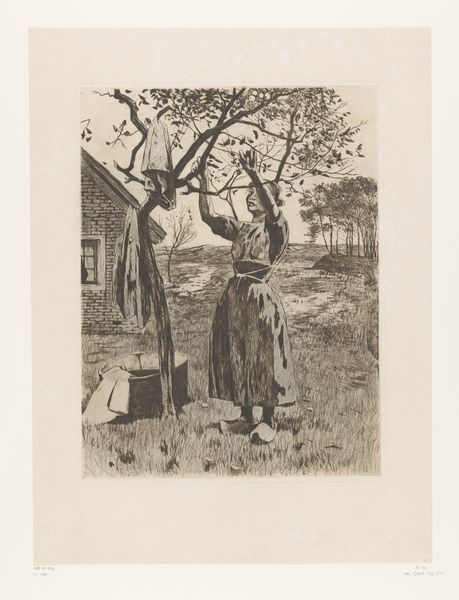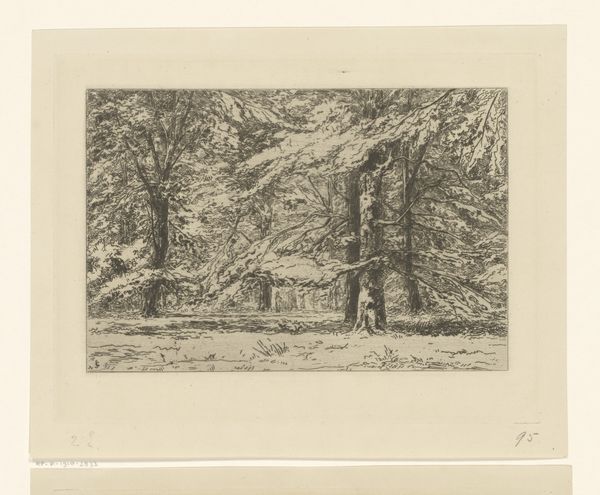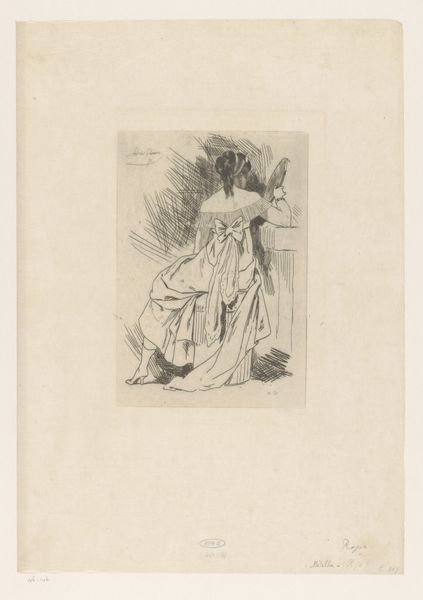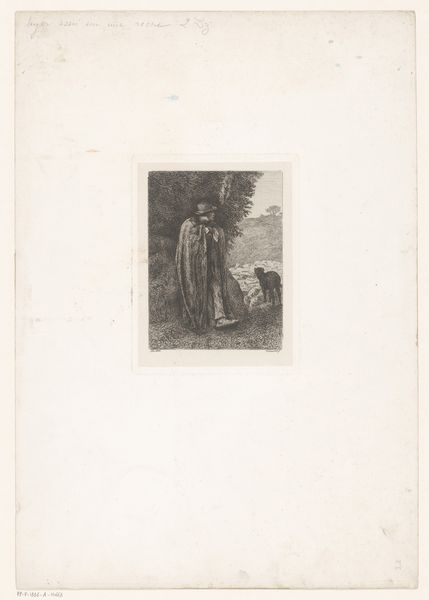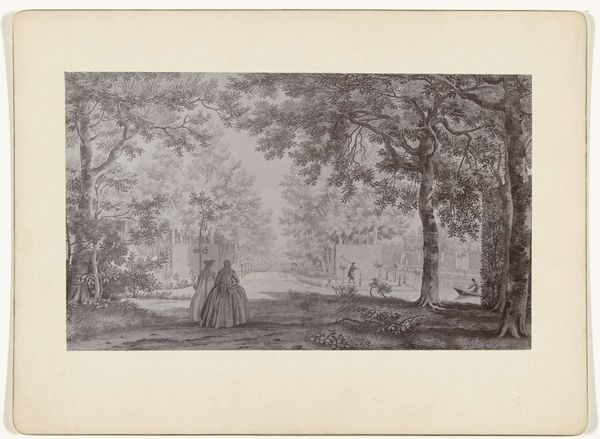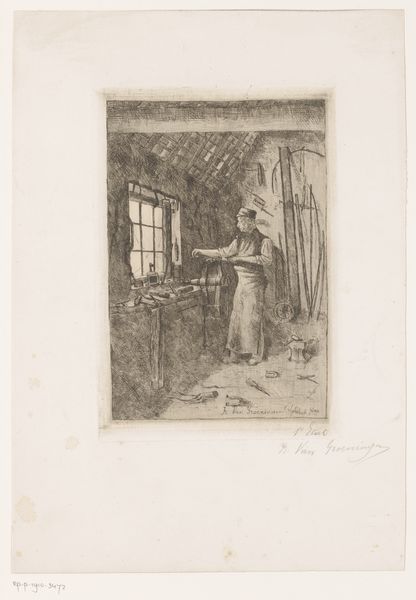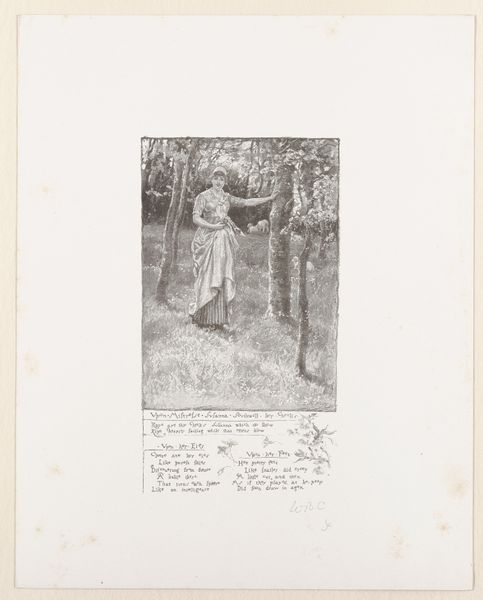
drawing, paper, pencil
#
drawing
#
pencil sketch
#
landscape
#
paper
#
pencil
#
genre-painting
#
realism
Dimensions: height 340 mm, width 230 mm
Copyright: Rijks Museum: Open Domain
Curator: The contemplative mood of this 1887 pencil drawing is immediately striking, isn’t it? Editor: It is. There’s a stillness to it, almost hushed. The texture is subtle; the composition seems to evoke tranquility, something almost frozen in time. Tell me more about what we're looking at. Curator: This drawing by Karl Meunier, titled "Non met breinaalden in de hand op het Begijnhof te Brugge", depicts a nun holding knitting needles at the Beguinage in Bruges. Its production aligns with a broader late-19th-century fascination with religious life and genre scenes. The Beguinages, in particular, offered a romanticised, often idealized glimpse into a world separate from rapid industrial change. Editor: I see. So, while seemingly simple, it engages with significant social narratives. The pencil itself, a humble material, speaks volumes about accessibility. It implies a potential for mass reproduction and circulation, contrasting the often-exclusive nature of art viewership and promoting a narrative of art for the people. Curator: Exactly. Consider the historical context. This work exists in a time of burgeoning print culture and expanding notions of national identity. Picturesque locales like Bruges and their associated communities, in this case, Beguines, became powerful signifiers of regional authenticity. They served the cultural elite, naturally, and at the same time these images offered access to ordinary citizens who wanted access to something traditional and lasting, something apart from their everyday. Editor: And let's not overlook the institutional aspect. Drawings like this were easily collectable, affordable and displayed at the popular shows that served the commercial ambitions of many artists at the time, reinforcing certain social and political ideas that circulated in the artistic community and with the collectors. This Beguine scene connects to themes of feminine virtue and spiritual dedication, themes that resonated with conservative segments of Belgian society at that time. The choice of the site being the Beguinage only emphasizes all of this in very sharp focus, to the eyes of the period. Curator: Agreed. Meunier uses the medium, his drawing and realism style, and location to capture and project very certain and specific historical moments. And I am glad that it provides space to the public even today for a continued study. Editor: Absolutely. These artistic echoes provide the opportunity for reflections and understandings on a society of yesteryear to our present-day.
Comments
No comments
Be the first to comment and join the conversation on the ultimate creative platform.
